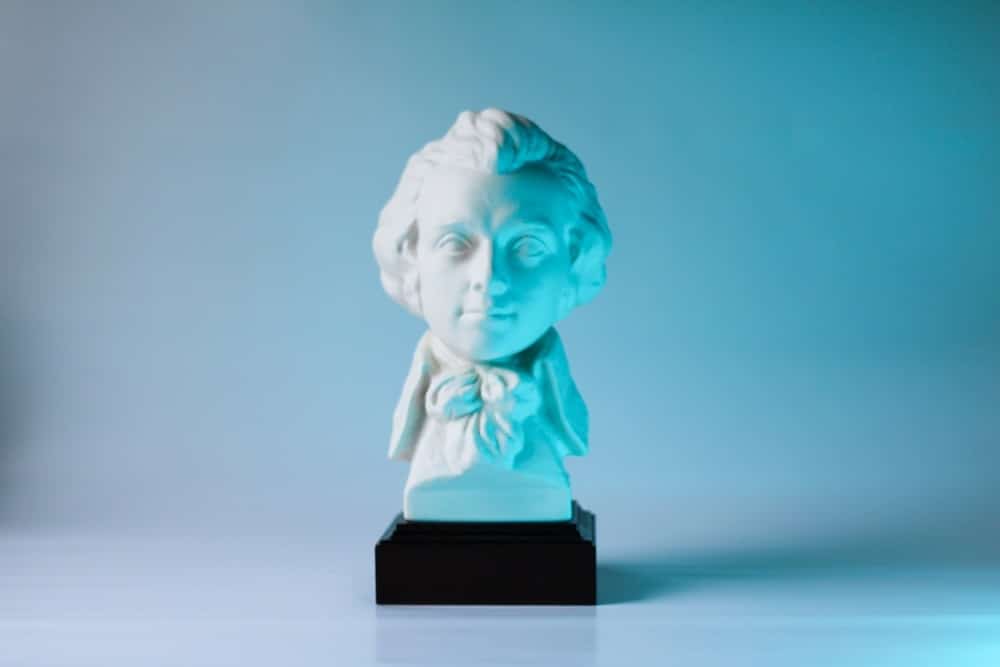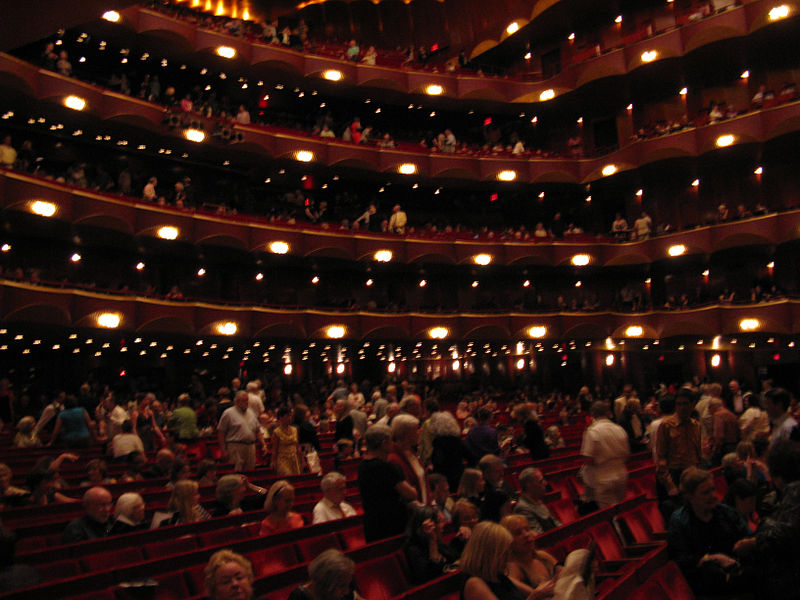
The influence of W.A. Mozart across all areas of culture has been colossal, from the Baby Mozart Project through to contemporary song.
You can hardly pass through a day without encountering the music of W.A. Mozart, albeit in advertisements, on-hold loops, or in games and films.
In the 1994 Frank Darabont film The Shawshank Redemption, for example, W.A. Mozart’s famous duet “Duettino Sull’aria” from The Marriage of Figaro is used to chilling effect.
Mozart’s Operatic Influence on Modern Pop Music
When I first read the title of this article, my immediate thought was of the epic Queen song from the album A Night at The Opera (1975), Bohemian Rhapsody. Queen was never a band to take the well-trodden pathway of songwriting.
The run-of-the-mill verse/chorus structure of so many pop songs was not where Queen placed their loyalties. Bohemian Rhapsody, along with the title of the album, gives you a giant clue where the band drew influence and inspiration.
Described by fans and critics alike as a mini rock opera, Bohemian Rhapsody epitomizes Queen’s valiant desire to compose a song that trod a new, innovative route, taking, amongst other composers, W.A. Mozart as a model.
You hear characteristics of the genre throughout the song with melancholy aria-like passages that contrast with bombastic, overblown choruses. Figaro is even included in the lyrics.
Ten years after Bohemian Rhapsody, in 1985, we discover Austrian musician Falco creating a song inspired by W.A. Mozart. It is also quite operatic in its delivery and, with German lyrics, still proved to be incredibly popular across the charts in Europe.
Later, another version was launched that included more English content, but the song received rave reviews and considerable public interest. Rock Me Amadeus hit the number-one slot on the Billboard 100 in March of 1986.
The Melodic Craftsmanship of Mozart
Some of W.A. Mozart’s most memorable melodies come from his operatic output. There are a great deal of others that don’t, but there is something like a song that I believe helps a melody have a more significant impact on the listener.
It may be our innate response to the human voice and perhaps even reminds us of our earliest days when we might have been sung a lullaby or two to get us to sleep.
W.A. Mozart’s melodic gift is dramatically illustrated in arias such as The Queen of The Night from The Magic Flute, Susanna’s Aria from The Marriage of Figaro, or perhaps Leporello’s aria Notte e Giorno Fatticar from Don Giovanni.
Whilst it might appear that W.A. Mozart was able to simply churn out piece after piece, we should not forget the years of tutoring from his father Leopold, nor the amount of constant revision the composer made of his work. He knew only too well that if he were to succeed as a composer of opera, he needed to compose tunes that stuck in the ear.
Mozart’s Influence on The Beatles
In this way, the music of W.A. Mozart parallels popular songs. Artists writing songs today face an even more thorny pathway to success.
Paul McCartney and The Beatles took inspiration from composers like W.A. Mozart because of the clear appeal of what he composed. Operatic works doubtless played an equally important role in the inspiration of many Beatles songs.
Not only is it reflected in the melodic writing, but also the arrangement of the song. Under the influence of producer George Martin, The Beatles began to use orchestral instruments in their songs, including harpsichords, choirs, and later Indian instruments too.
The Simplicity and Emotional Power of Mozart’s Music
In addition, many of W.A. Mozart’s operatic arias are not always harmonically complex. Some are, and he was not a composer who in any way shied away from the experimental; however, many operatic songs are not more than four chords.
The effective simplicity of this, alongside what we can now consider as the familiarity of tonality, produces a platform from where the carefully crafted melody can stand. Maybe the message received from the Master is that a song doesn’t need to be complex to be successful.
These separate compositional components do not add up too much alone. Where W.A. Mozart’s operatic music strikes a chord is in how he can evoke an emotional response through his music. Opera, by its very nature, is dramatic.
The aria is a place where the character openly displays and conveys their feelings. In W.A. Mozart’s operas, we can find empathy with the characters and buy into their plight, which becomes stronger, reinforced through the power of song.
Direct and Subliminal Links to Contemporary Pop
A direct link from W.A. Mozart to contemporary pop is in Kelis’s song Like You. In today’s world of commercial pop, the concept of sampling another artist’s work is common.
Samplers, after all, have been available to buy for many decades and are now part of the included software on most DAWs.
The connection between this R&B track and W.A. Mozart is that it shamelessly uses the aria from The Magic Flute called The Queen Of The Night as a kind of backdrop to the song that becomes apparent during the first chorus.
You may not always uncover direct relationships with W.A. Mozart and popular culture in the way of the song above. Instead, what is apparent is more of an undercurrent of influence that at times is almost subliminal.
Without consciously being aware of W.A. Mozart, songwriters would have been exposed to many of his works. The key element here is the ability of these pieces, notably the arias, to lodge in one’s mind only to surface later in a new piece.
The Nature of Musical Inspiration
How many times do you find songwriters question whether their work is a result of a spark of inspiration or a close image of another composer’s piece?
Paul McCartney was thought to have said, after composing the famous song Yesterday, that he was convinced he’d copied another composer’s work. As we know, it was pure McCartney.
The point is that W.A. Mozart’s every inventive use of structures, his strong, distinct harmonic progressions, topped off with exquisitely sculpted melodies, has played a significant part in the creation of today’s music.

